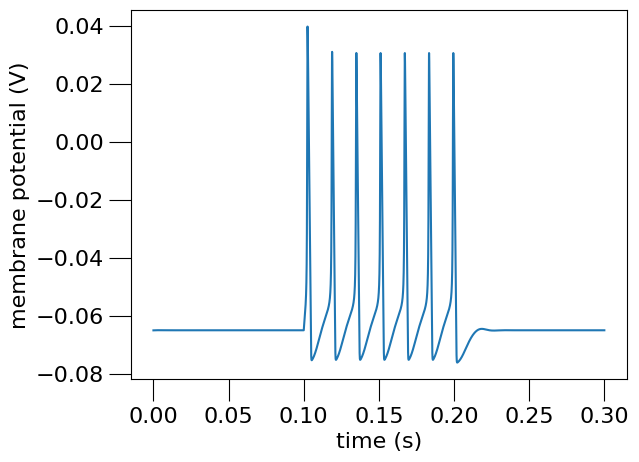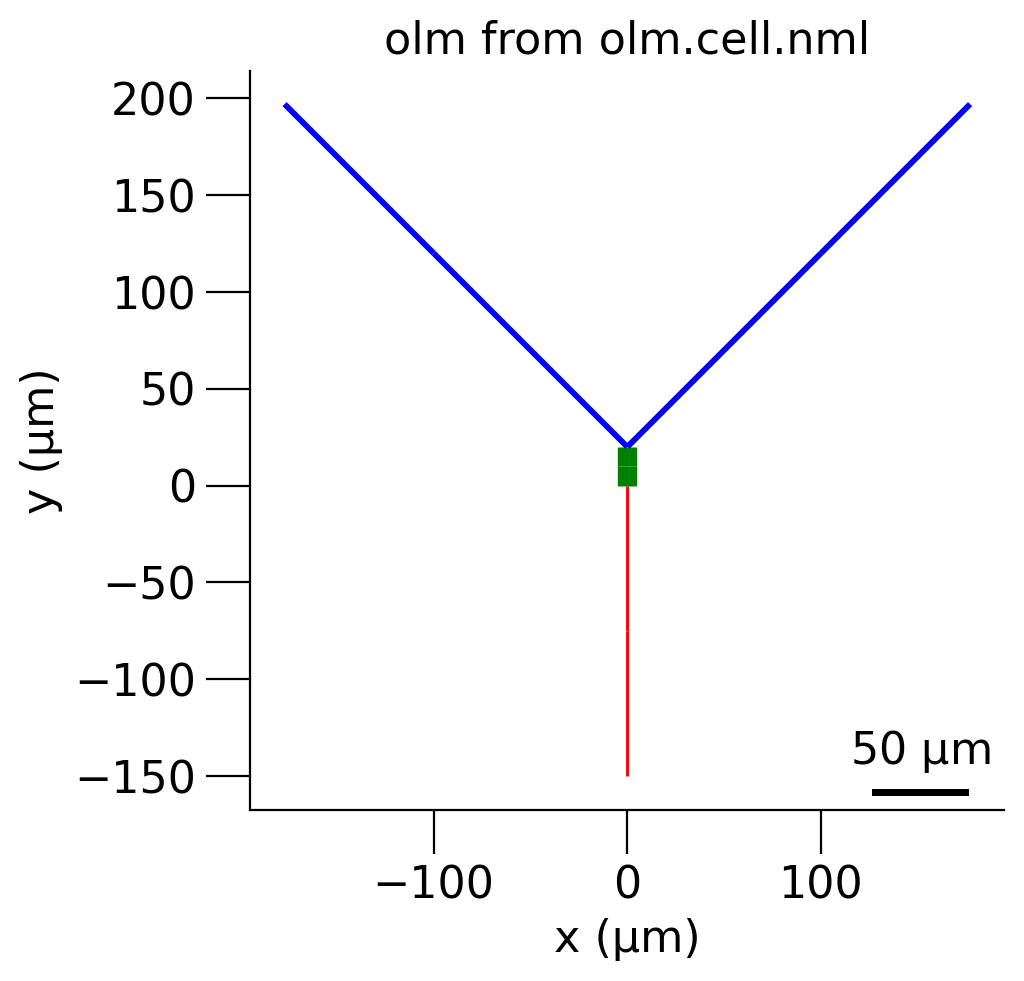Getting started with NeuroML#
The best way to understand NeuroML is to work through NeuroML examples to see how they are constructed and what they can do. We present below a set of step-by-step guides to illustrate how models are written and simulated using NeuroML.
 |
 |
 |
 |
Link to guide |
Description |
Model life cycle stages |
|---|---|---|
Introductory guides |
||
Create and simulate a simple regular spiking Izhikevich neuron in NeuroML |
Create, Validate, Simulate |
|
Create a network of two synaptically connected populations of Izhikevich neurons |
Create, Validate, Visualise, Simulate |
|
Build and simulate a single compartment Hodgkin-Huxley neuron |
Create, Validate, Visualise, Simulate |
|
Create and simulate a multi compartment hippocampal OLM neuron |
Create, Validate, Visualise, Simulate |
|
Advanced guides |
||
Create novel NeuroML models from components on NeuroML-DB |
Reuse, Create, Validate, Simulate |
|
Optimise/fit NeuroML models to experimental data |
Create, Validate, Simulate, Fit |
|
Extend NeuroML by creating a novel model type in LEMS |
Create, Simulate |
|
Step by step walkthroughs |
||
Guide to converting cell models to NeuroML and sharing them on Open Source Brain |
Create, Validate, Simulate, Share |
|
Conversion of Ray et al 2020 [RAS20] to NeuroML |
Create, Validate, Visualise, Simulate, Extend using LEMS |
You do not need to install any software on your computers to run many of the examples above. These examples are followed by a Jupyter notebook for you to experiment with inside your browser (more info).
